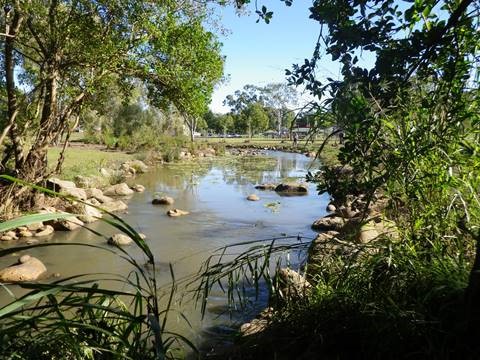|
|
Bypass fishwayBypass fishway – Construction and operation Select from the tabs below Please see general information for all fishway types. ConstructionFor most bypass fishways (excluding where concrete is used, e.g. cone fishway), the commissioning process may allow a tolerance greater than 5% because of the unpredictable or imprecise nature of rock placement and earthworks compared with concrete. However, basic measurements such as head loss, water depth and slope should meet design specifications within the agreed level of tolerance. Bypass construction is a specialist operation involving skill and patience. A close relationship is required between design, construction and supervision personnel, and advice should be obtained from a rock ramp construction specialist to ensure that the requirements for configuration and integrity of the structure are met. Operation and maintenanceBypass fishways tend to require little human intervention to operate, however optimal hydraulic operation and regular maintenance is crucial for the long-term passage of fish through rock ramp fishways. Rocks that move during high flows can eventually cause the hydraulics to become suboptimal and lead to functional failure of the fishway. A regular inspection schedule will ensure the fishway functions effectively in the long-term, however it is often hard to determine when maintenance is needed, and this aspect requires training for local operators Examples of inspection and maintenance tasks for a bypass fishway:
References
Last updated: 10 May 2021 This page should be cited as: Department of Environment, Science and Innovation, Queensland (2021) Bypass fishway – Construction and operation, WetlandInfo website, accessed 8 May 2025. Available at: https://wetlandinfo.des.qld.gov.au/wetlands/management/fish-passage/technologies/fishway-options/bypass/construction-operation.html |

 — Department of the Environment, Tourism, Science and Innovation
— Department of the Environment, Tourism, Science and Innovation

